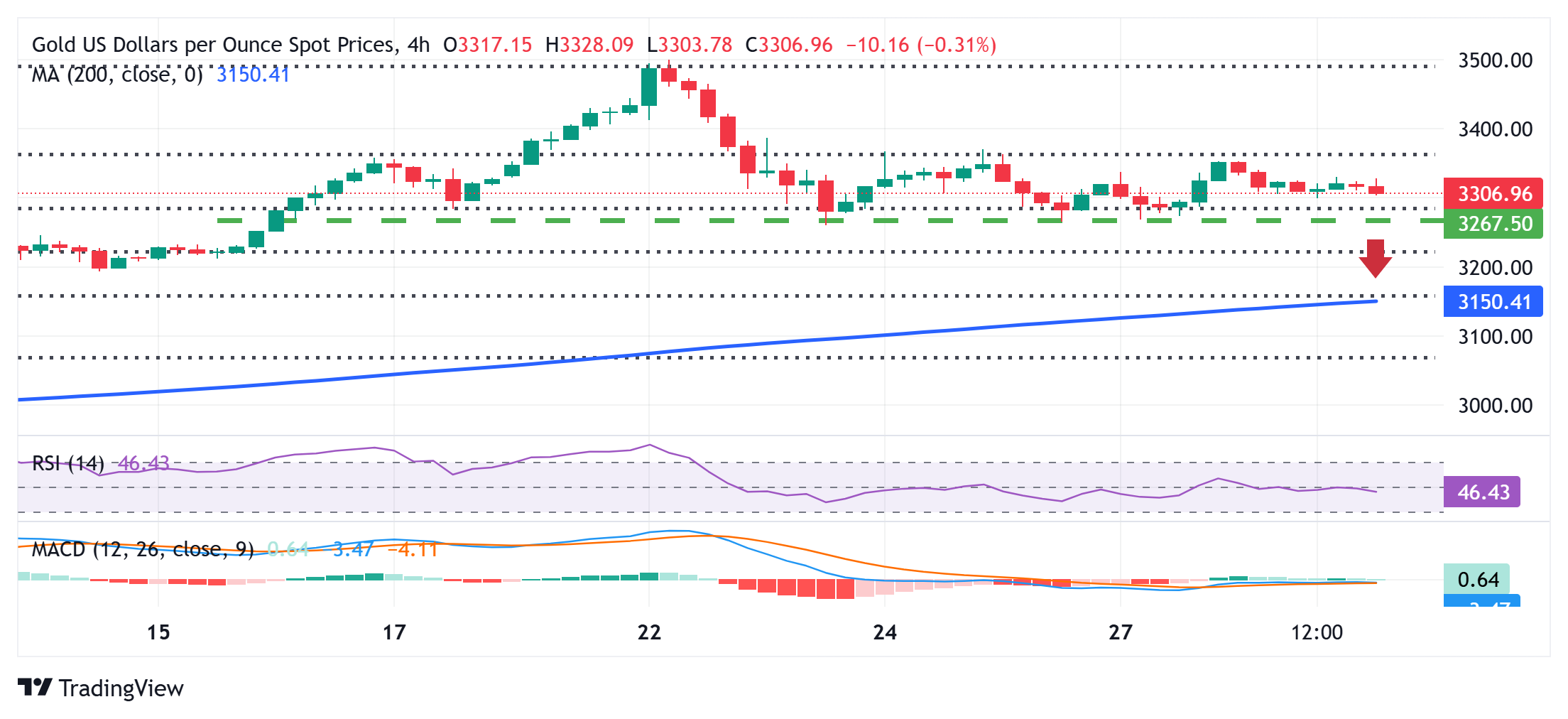-
Gold price faces selling pressure for a second consecutive day as safe-haven demand continues to fade.
-
A firmer US dollar adds to the downside amid improving trade sentiment.
-
Expectations of Fed rate cuts curb the dollar’s gains and help limit further losses for the non-yielding metal.
Gold price (XAU/USD) remains under pressure and trades near its daily low, just above the $3,300 mark during early European trading on Wednesday. The yellow metal struggles to attract buying interest amid fading safe-haven demand, driven by easing US-China trade tensions. Additionally, month-end portfolio rebalancing supports the US Dollar (USD), further weighing on gold.
Despite some progress in trade negotiations, uncertainty persists due to President Donald Trump's inconsistent stance on trade and mixed signals from US-China discussions. This uncertainty, combined with rising expectations of aggressive monetary easing by the Federal Reserve (Fed), limits significant upside for the greenback and lends some support to non-yielding gold.
Market Drivers: Mixed Signals and Cautious Optimism
-
On Tuesday, President Trump signed an executive order aimed at softening the impact of tariffs on the auto sector, granting automakers two years to raise domestic content in vehicles. This move has reinforced optimism over a potential de-escalation in US-China trade tensions.
-
The US Dollar continues to attract buyers for a second straight session, adding pressure on gold. However, investor sentiment remains cautious due to Trump’s unpredictable trade policies, which stoke fears of a deeper economic slowdown.
-
The likelihood of more Fed rate cuts gained traction following disappointing US macro data. The Job Openings and Labor Turnover Survey (JOLTS) showed job openings fell to 7.19 million in March from 7.48 million in February. Meanwhile, the Conference Board’s Consumer Confidence Index plunged to 86.0 in April — the lowest level in nearly five years — with the Present Situation Index and Expectations Index dropping to 133.5 and 54.4, respectively. These figures bolster expectations for further Fed easing, offering underlying support to gold.
- On the geopolitical front, Russia rejected Ukraine’s proposal to extend a temporary ceasefire to 30 days. Additionally, the US warned it may halt diplomatic efforts if both sides fail to propose viable peace plans. This geopolitical tension may continue to offer a floor to gold prices amid broader uncertainty.
- Investors now await a series of key US economic releases, including the ADP private payroll report, Q1 GDP growth figures, and the PCE Price Index due Wednesday. These will be followed by the all-important Nonfarm Payrolls (NFP) report on Friday. The data will provide crucial clues on the Fed’s policy path and shape near-term gold price direction.
Technical Outlook: Key Levels to Watch

Gold’s decline below the $3,300 level may find solid support near the $3,265–$3,260 region — the 38.2% Fibonacci retracement of the latest rally from the mid-$2,900s. A break below this zone could trigger further downside toward the 50% retracement level at around $3,225, and potentially to the $3,200 psychological level.
On the upside, initial resistance lies at the Asian session high around $3,328, followed by the $3,348–$3,353 zone. A breakout here could open the door for a move toward $3,366–$3,368, with a push above that potentially driving gold to the $3,400 mark. Further bullish momentum could target $3,425–$3,427, before bulls attempt a run at the $3,500 psychological barrier.





